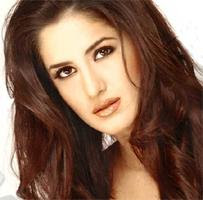Tonga and Vanuatu Country Summaries by ROBERT BELL
Recreation & Leisure
Vanuatu consists of more than 80 islands, lying about 2000 kilometres north-east of Queensalnd. The largest island, Espiritu Santo, is 4010 square kilometres. Australia is a mainly a flat land, but most of Vanuatu's islands are dominated by mountainous regions. The highest peak, Mt Tabwemasana (1880 metres), is on Espiritu Santo. The Earth beneath Vanuatu is unstable, and there is volcanic and earthquake activity.
Vanuatu has been inhabited for more than 3000 years. Separate communities developed, but trade between islands was common, and canoes were used to move people and produce.
The Portuguese were the first Europeans to come to Vanuatu, in 1606. Next I came the French in 1768, then the British led by Captain James Cook in 1774. Cook named the islands the 'New Hebrides'. During the 1840s, traders and missionaries made contact.
From 1887 to 1980 control over the New Hebrides was shared by France and Britain. During World War II, the New Hebrides were a key base for the United States of America in the battles to prevent the Japanese taking control of the South Pacific and Australia. Vanuatu gained independence on 30 July 1980.
About 200 000 people live in Vanuatu, the same number as in Hobart. Most people live on the islands of Efate, Espiritu Santo, Malakula and Tanna. Unlike Australia, 95 per cent of people in Vanuatu are native to the country. They are known as Ni-Vanuatu, and like Aboriginal Australians they have a special relationship with their environment.
The remaining five per cent consist of French, Australian, New Zealand, Vietnamese and Chinese people, as well as other Pacific Islanders. Three main languages are spoken — English, French and Bislama (a form of pidgin English).
The literacy rate in Vanuatu is low, and most students do not attend secondary school. But, in Port Vila, there is a technical college and a campus of the University of the South Pacific.
The economy is centred around the land, and major agricultural exports are beef and cocoa. Most people are involved in subsistence agriculture. There is also a large timber industry, and tourism is important to the economy, providing work in tourist areas, such as Vila.
Tonga Tonga lies about 650 kilometres east of Fiji. It consists of 150 islands, and 40 of them are inhabited. The capital city is Nuku'alofa, which is on Tongatapu, the largest island.
Polynesians first settled in Tonga about 3500 years ago. Captain James Cook made several visits during the 1770s and named the islands the Friendly Islands. Tonga gained full independence from Britain on 4 June 1970, but remains a member of the Commonwealth. Kings and queens have ruled Tonga for more than 1000 years. The reigning king is Taufa'ahau Tupou IV.
The population of Tonga is approximately 110 000, which is similar to the population of Cairns. Most people are of Polynesian descent, and they speak English and Polynesian. They are committed Christians with the main denomination being the Free Wesleyan Church.
The economy of Tonga revolves around agriculture and fishing, with pumpkins, coconuts and bananas being major crops. Education is important in Tonga, and school is compulsory for children between the ages of six and 14. If you are looking for great value Fiji holidays visit escapetravel.com.au. Escape travel has an exciting selection of cheap holidays for all budgets and tastes. ET181208-6. Visit Vanuatu and Tonga Nation Summaries.
















